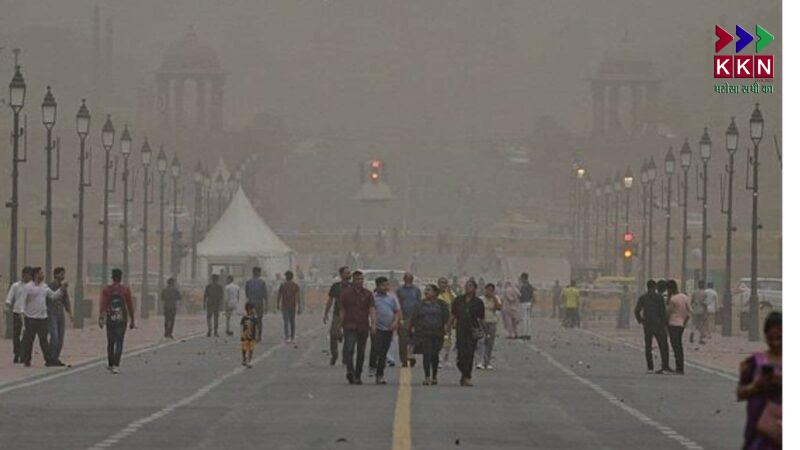
On Monday, November 3, 2025, Delhi remained shrouded in a thick blanket of smog, pushing the city’s air quality into the ‘very poor’ category. According to the Central Pollution Control Board (CPCB) data, the overall Air Quality Index (AQI) in Delhi was recorded at 324 at 6:05 AM, falling into the “very poor” category. The capital city’s air quality on Sunday was similarly alarming, with an AQI of 366, continuing the trend of hazardous pollution levels.
The data from CPCB also revealed that several monitoring stations recorded AQI values above 400, placing them in the ‘severe’ category. These monitoring stations included Anand Vihar (371), Bawana (371), Burari Crossing (384), Jawaharlal Nehru Stadium (331), Mundka (343), Narela (386), Rohini (363), and Wazirpur (389). In addition, many neighboring cities in the National Capital Region (NCR) such as Noida (311), Ghaziabad (334), and Gurugram (304) also reported poor air quality.
The Air Quality Index (AQI) Categories
The AQI is divided into several categories to assess air quality. These are:
0 to 50: “Good”
51 to 100: “Satisfactory”
101 to 200: “Moderate”
201 to 300: “Poor”
301 to 400: “Very Poor”
401 to 500: “Severe”
Though Delhi has not officially recorded a “severe” air quality day yet this year, experts predict that it may occur this week. The last recorded instance of a “severe” AQI was on December 23, 2024, when the AQI reached 406.
Reasons for the Rising AQI Levels
The worsening air quality in Delhi can be attributed to several factors. According to the Air Quality Early Warning System (AQEWS), the wind speed from the northwest decreased to less than 8 km/h on Sunday evening and night. This reduced the dispersal of pollutants in the air, leading to a concentration of harmful particles. Such air quality can cause respiratory issues, particularly for people with lung or heart conditions, as well as for children and the elderly.
AQEWS has forecasted that Delhi’s air quality will remain in the ‘very poor’ category until November 4, 2025. Data from the CPCB showed that the PM2.5 level was recorded at 189.6 micrograms per cubic meter, while the PM10 level was 316. PM2.5 refers to fine particulate matter smaller than 2.5 micrometers, which can penetrate deep into the lungs, while PM10 includes particles up to 10 micrometers in size.
Impact of Wind Conditions on AQI
According to Mahesh Palawat, Vice President of Skymet Meteorology, the air conditions on Sunday were not ideal for the dispersal of pollutants, which led to a buildup of smog. He mentioned that the wind speed improved to about 10 km/h during the day, providing some relief and improving the AQI. However, the calm winds persisted for most of the day, contributing to the slow dispersion of pollution.
By midday, the wind direction shifted to the west and northwest, which brought the smoke from crop burning in nearby regions into Delhi, further exacerbating the pollution levels.
Health and Safety Concerns
As the air quality remains at hazardous levels, residents of Delhi are advised to take precautions. Prolonged exposure to such poor air quality can lead to serious health issues such as asthma, respiratory infections, and cardiovascular problems. Children and the elderly are particularly vulnerable to the effects of this toxic air.
The government and environmental agencies continue to monitor the situation closely, and there is a growing call for stricter measures to reduce air pollution, such as controlling vehicular emissions and addressing the problem of crop stubble burning in neighboring states.
Delhi’s persistent air pollution has become a major public health concern. With the AQI levels consistently in the ‘very poor’ and ‘severe’ categories, the city is grappling with its worst air quality in recent times. Experts predict that the situation will remain challenging for the coming days, and immediate action is needed to tackle the root causes of pollution. It is crucial for the authorities to enforce stricter regulations and for the public to take necessary precautions to minimize exposure to harmful air.
Share this:
- Click to share on WhatsApp (Opens in new window) WhatsApp
- Click to share on Facebook (Opens in new window) Facebook
- Click to share on Threads (Opens in new window) Threads
- Click to share on Reddit (Opens in new window) Reddit
- Click to share on Telegram (Opens in new window) Telegram
- Click to share on X (Opens in new window) X
- Click to share on LinkedIn (Opens in new window) LinkedIn


